Ulva. Padina. Sargassum swartzii. What may seem to be alien gibberish is a trio that might do us a complete lot of excellent to get acquainted with. For they very properly could be the meals of the long run.
Also generally known as ‘sea lettuce’, ‘sea fan’ and ‘sea holly’, respectively, they’re simply three of over 800 species of seaweed discovered abundantly within the waters alongside India’s 7,516 km shoreline. Sustainable superfoods, they’re one of many newest meals tendencies to take the plant-based food regimen craze to a complete different depth. Quite actually.
Besides serving to assist different marine life and cleansing the waters surrounding it, the consumption of mineral-rich seaweed comes with a number of well being advantages. No shock then that seaweed farming is an rising sector in India. One with the potential to rework the lives of coastal communities by offering large-scale employment and extra revenue.
Women from Chinnapalam, Rameswaram, in Tamil Nadu, concerned in seaweed cultivation.
| Photo Credit:
L. Balachandar
According to the Central Marine Fisheries Research Institute, in 2021, India produced 34,000 tonnes of seaweed, however has the potential to supply round 9.7 million tonnes per yr. Tamil Nadu, adopted by Goa, are the largest producers of seaweed within the nation, and additionally it is present in abundance in Gujarat, Lakshadweep and Andaman & Nicobar. Finance Minister Nirmala Sitharaman had proposed in her 2021-22 Budget the organising of a multipurpose seaweed park in Tamil Nadu to advertise its cultivation.

Ulva-padina-sargassum swartzii salad and a vegetable broth at Mumbai’s Masque Lab.
| Photo Credit:
Raul Dias
Sadly, for many of us to date, the thought of edible seaweed has been restricted to the extra ubiquitous Japanese dishes equivalent to nori (pyropia)-wrapped sushi, konbu (a species of kelp) broth with miso and the crunchy textured yumminess of a recent wakame (one other species of kelp) salad topped with much more seaweed within the type of a blended seaweed furikake sprinkling.
Ingredients from the ocean
My initiation to seaweed as seen by the prism of the modern Indian eating scene is an embarrassingly current one. But one which I’ve been aware about with alarming frequency over the previous few months, with a number of F&B gamers getting into the fray.
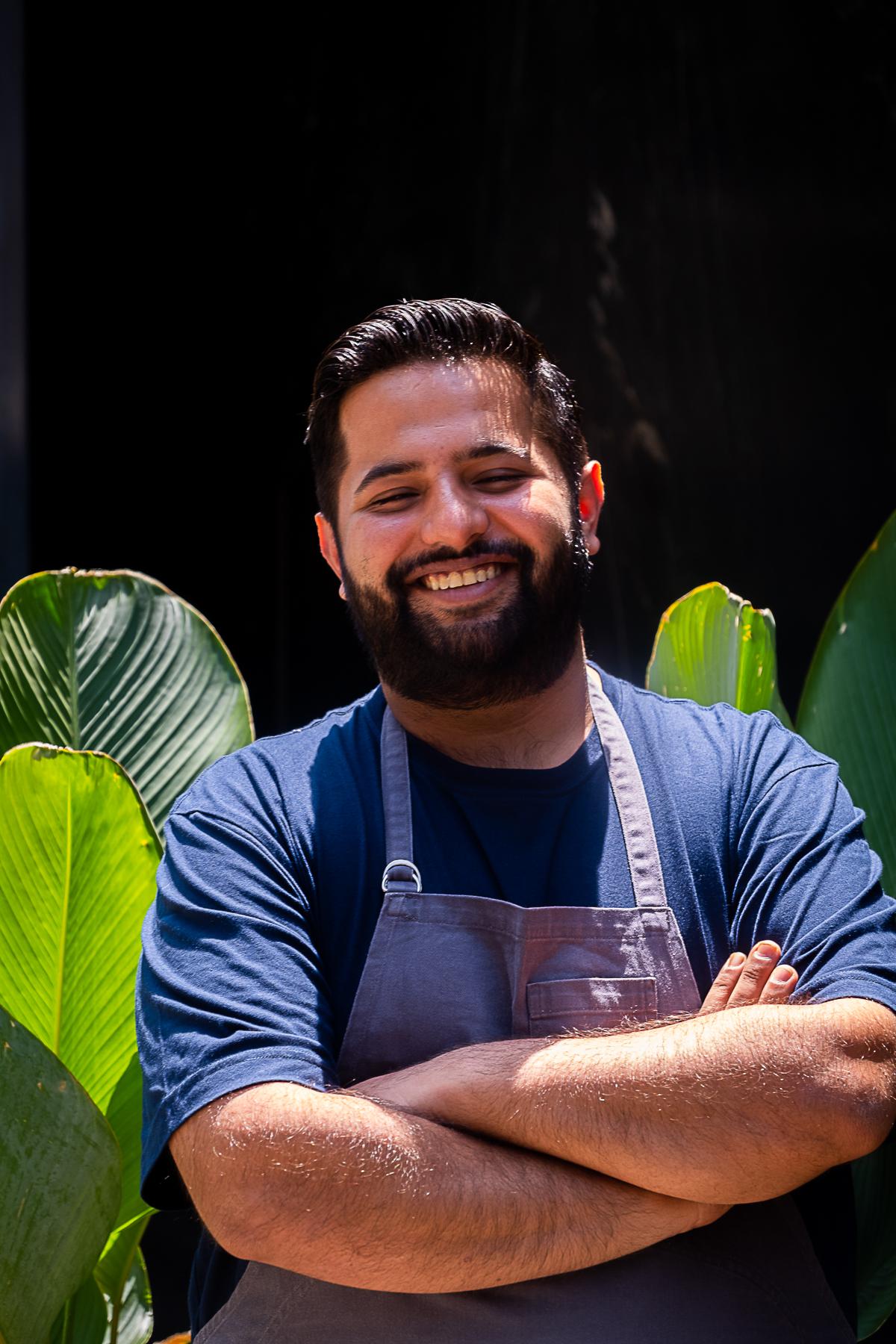
Chef Varun Totlani of Mumbai’s Masque Lab.
I lately attended a sit-down dinner at Mumbai’s Masque Lab, the place head chef Varun Totlani determined to shake issues up a bit with one in all his programs. He served us a two-part dish made up of an ulva-padina- sargassum swartzii salad and a vegetable broth.
The latter flavoured with gondhoraj lebu as a zesty foil to the brininess of the three sorts of seaweed the soup was infused with. “Seaweed is now being discovered in the waters of Goa (among other places). So, my recent trip to Goa was to suss out new flavours and ingredients from the sea that I’ve incorporated in this menu,” says Totlani.
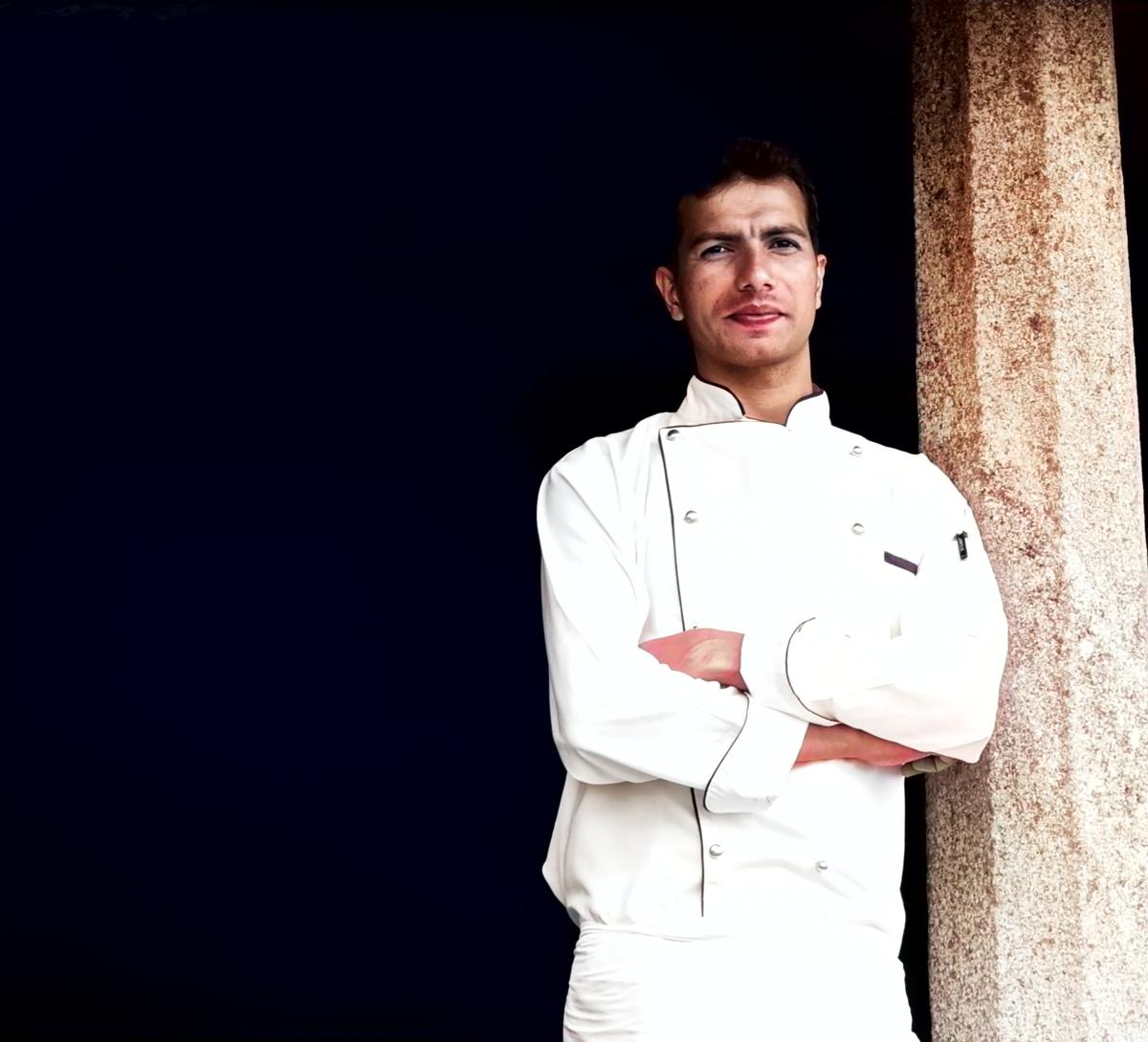
Prakash Nayak, group govt chef at Niraamaya Surya Samudra in Kovalam, Kerala.
Perfectly aligned with the Relais & Châteaux group’s annual Food for Change marketing campaign — that had regenerative agriculture as its prime agenda for 2022 — is Niraamaya Surya Samudra, its member lodge in Kovalam, Kerala. The lodge’s group govt chef Prakash Nayak, who has give you a inexperienced papaya salad with nori, says, “We greatly support the growth of a sustainable ocean economy by carefully sourcing goods from licenced merchants and local fishermen. One approach to develop awareness that can help rejuvenate the ocean and educate our visitors is by using seaweed, which is known for its rich nutrients and is a crucial ally against climate change.”
Seaweed in meals, pharma and extra
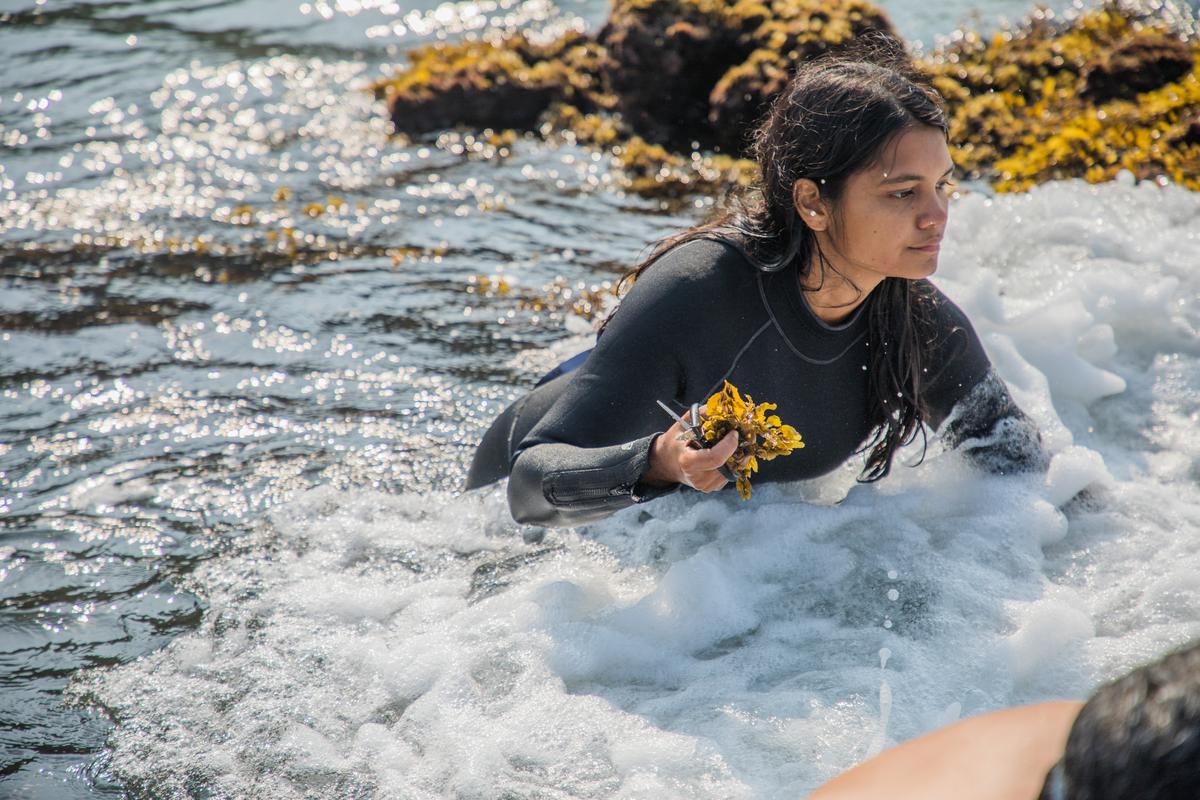
Gabriella D’Cruz, founding father of Goa-based The Good Ocean that harvests, processes and provides dried seaweed.
It was throughout a analysis tour in coastal Tamil Nadu in 2015 that Gabriella D’Cruz met with what she calls an “incredible community of women seaweed harvesters” and realized of their fascinating work, the place they free-dive to gather seaweed within the Gulf of Mannar. A couple of years later, armed with a Masters in Biodiversity Conservation and Management from the University of Oxford, D’Cruz launched The Good Ocean, a Goa-based firm that harvests, processes and provides a wide range of dried seaweed to cooks and eating places throughout India.

Dried seaweed packaged and offered by The Good Ocean.
“I am fascinated by the versatile nature of seaweed. India currently uses the gel extracts from seaweed (agar agar, carrageenan and sodium alginate) as additives to food and pharma products, but there’s so much more that we can do with these species. Seaweed make an excellent nutraceutical. And although it comes from the sea, it is completely vegan. Seaweed is also scientifically proven to improve gut health,” says D’Cruz.
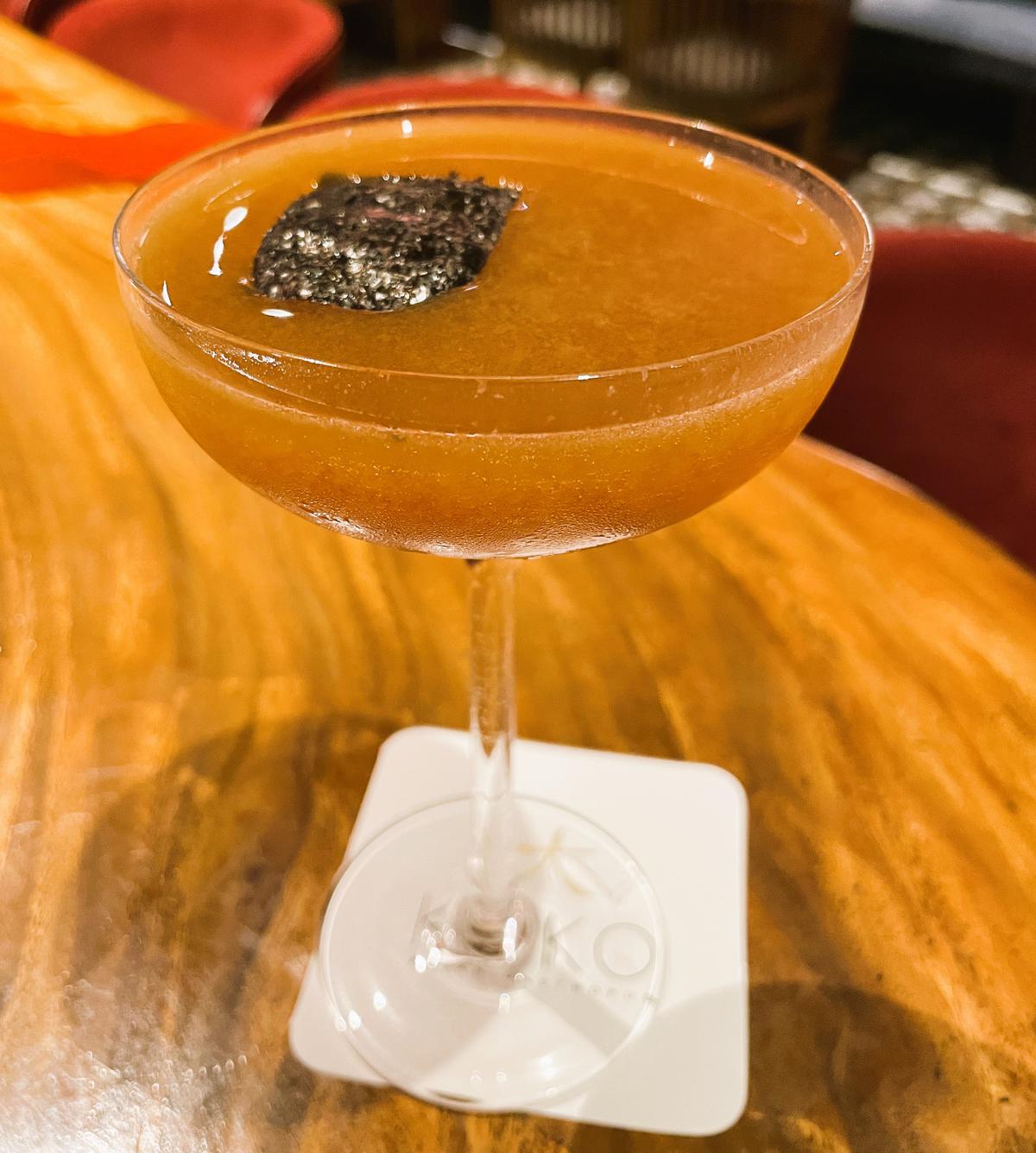
‘Miso Caliente’, a nori and miso whiskey cocktail at Mumbai’s Pan Asian restobar Koko.
Keeping the superfood and its mineral-rich properties on the forefront of his creations is Vineeth Krishnan, bar head at Mumbai’s Pan Asian restobar Koko. His Miso Caliente, a nori and miso whiskey cocktail, curated by Yao Lu from Shanghai-based Union Trading Company is the sum of its pink miso paste, honey and nori elements. All tied up with a splash of chilli tincture to complete. “As an ingredient, seaweed provides the key characteristics of saltiness, iodine and charred-ness. It also is an outstanding source of the true scent of the ocean,” says Krishnan.
Sustainable sourcing

Yeshwant Holkar, working accomplice at Ahilya By The Sea, Goa.
Having reconstituted wakame — infused into vermouth and coriander leaves — as its chief element is the Ahilya By The Sea vodka cocktail served by the eponymous Goa resort. “Sustainability and responsibility in terms of our natural environment has always been core to what we do,” says Yeshwant Holkar, working accomplice at Ahilya By The Sea. “We are very focused on how we interact with the ocean and how we source our sustainable seaweed that brings the flavours of the sea into a very crisp and refreshing cocktail.”

Chef Radhika Khandelwal makes use of seaweed extensively in her menu at Fig & Maple eating places.
Lato, one other kind of seaweed, is often known as sea grape or sea caviar. Slowly climbing the recognition charts, it was first delivered to the fore just a few a long time in the past by Sister Avelin Mary. The now 79-year-old marine biologist and Roman Catholic nun set ahead her relentless effort to search out lato. After years of looking out, the ocean grapes had been lastly discovered alongside the Tamil Nadu coast, and cultivated by tradition know-how by the Javelin Mariculture Program. At current, over 17 forms of lato are present in India.
Using lato extensively on her menu is chef Radhika Khandelwal of the Fig & Maple restaurant, with outposts in New Delhi and Goa. “Using different produce and different varieties of seaweed allows us to explore more flavours,” she says. “My first experience working with seaweed was with lato, which literally looks like caviar or even tiny grapes and tastes like the very best of the ocean”.
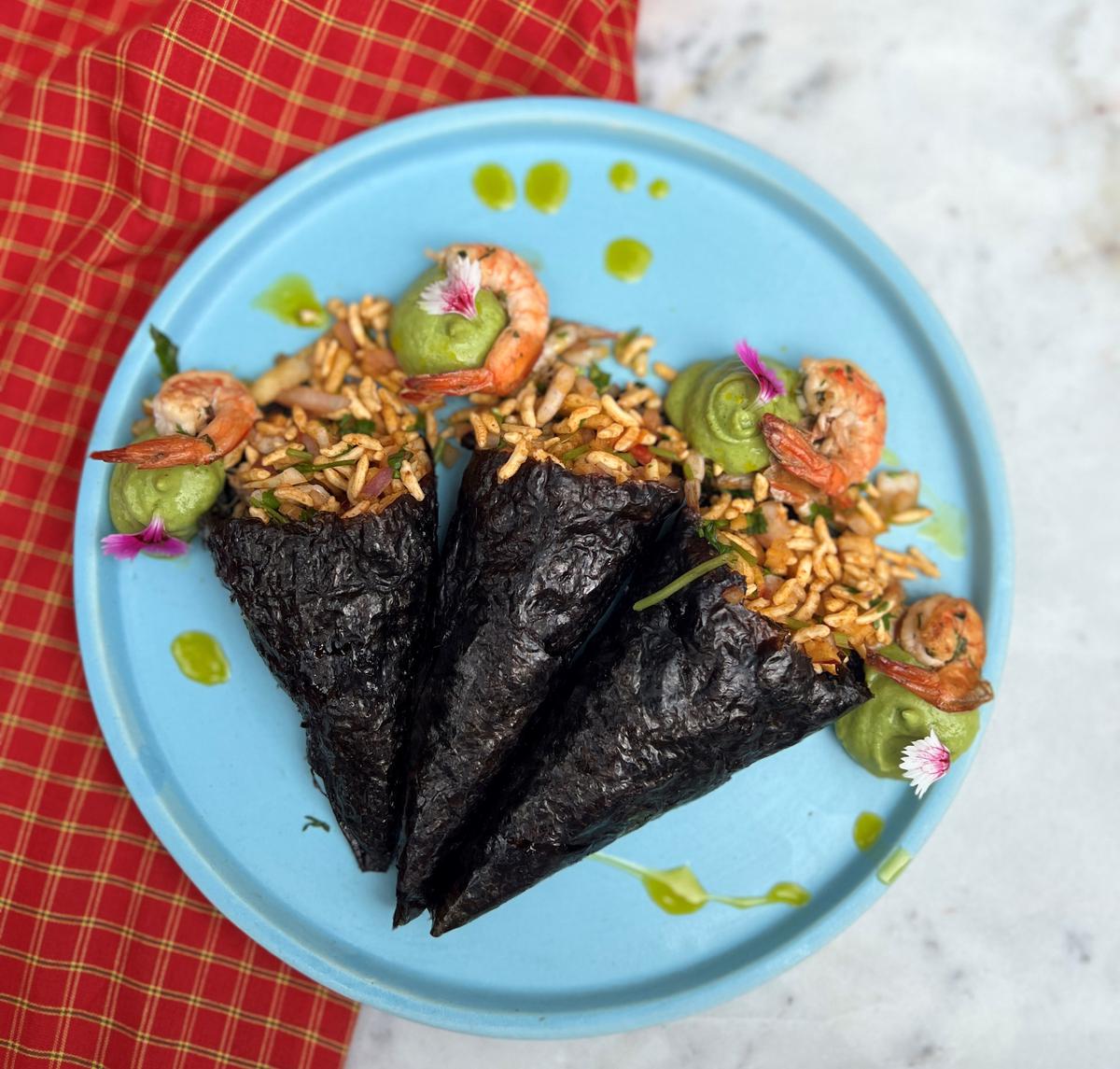
‘Jhaal muri’ wrapped in nori and served with an avocado curry leaf mousse at Fig & Maple restaurant.
One can discover lato and different seaweed used extensively in her dishes like jhaal muri wrapped in nori and served with an avocado curry leaf mousse and the latest addition to her menu, quirkily referred to as ‘a fish who lived underground’. This one makes use of semolina ( upma) as a base, seasonal fish and a mango ginger and tamarind leaf sauce, topped with a pomelo and Sargassum swartzii salad. Lato additionally reveals up in her seaweed martini cocktail that sees vodka infused with sea grapes and stirred with martini bianco. Wonder what a sure Mr. Bond would make of it?
The Mumbai-based author and restaurant reviewer is keen about meals, journey and luxurious, not essentially in that order.


